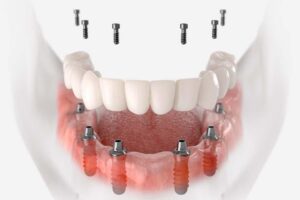
Scaling and polishing will remove deposits like calculus (tartar) and plaque from the surfaces of the teeth. Regular scaling and polishing or removal of the aforementioned deposits has been known to lessen a mild form of gum disease known as gingivitis and prevent progression to severe gum disease known as periodontitis.
The routine scale and polish treatment is also referred to by different names such as periodontal instrumentation, professional mechanical plaque removal, and prophylaxis.
Procedure
Even when you floss regularly and brush your teeth at least twice daily, the tendency for plaque and tartar buildup to occur will still be there. Is it important therefore to complement regular flossing, brushing, and dental cleaning with scaling and polishing.
Scaling is a dental process that will remove the stains or calculus deposits on the teeth. While scaling is done primarily on the teeth, it can also be applied to the roots in cases where periodontal pockets have already formed.
On the other hand, polishing is the process of making the teeth smooth. In some cases, dentist may give additional protection to the teeth by applying a little amount of fluoride.
Candidates
To achieve optimum oral health, scaling and polishing should be made an integral part of one’s dental care routine. Without proper dental care, damage can set in and a more complex and costly dental procedure might need to be carried out.
Fortunately, even those people who are already experiencing early signs of gum disease can still undergo the procedure as it can help delay the progression of the condition.
People who have bad breath may also benefit from the deep cleaning scaling and brushing provides. Aside from bacteria, halitosis or bad breath can also be a sign of gum disease.
Procedure
The procedure will begin with the application of a local anaesthetic to both the teeth and the gums to avoid pain and discomfort. A variety of instruments will then be used for scaling.
Typically, an ultrasonic instrument that will loosen the large and more visible deposits will be used. The instrument will also emit a cool mist of water to wash the debris away. Once the large deposits are removed, the dentist may use hand scalers.
While hand scalers can prolong procedure time, they can extend to deeper areas the ultrasonic device cannot reach. They are also used to get rid of smaller deposits, particularly those that are lodged in between the patient’s teeth.
Once the scaling is complete, the dentist will proceed with the polishing using a hand piece with a cup filled with soft rubber. A paste, often made of fluoride is placed on the rubber cup. The dentist will rub and move the hand piece on the teeth to smooth out the newly cleaned areas.
Depending on the position of the teeth and the severity of the stains, the procedure may take more than one thorough cleaning session before the desired result is achieved. Some minor discomfort may also be experienced on the jaw due to prolonged opening of the mouth.
The procedure will take at least an hour. The patient may resume normal activities after the procedure though eating and drinking might be prohibited the first 30 minutes to an hour after the procedure.




